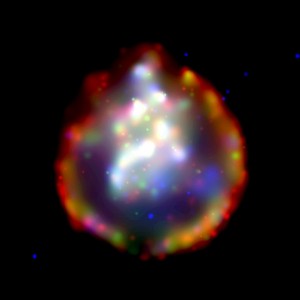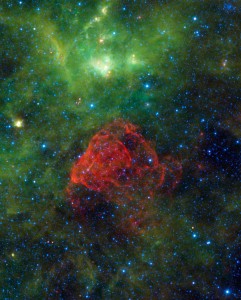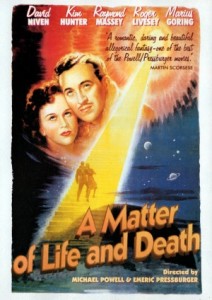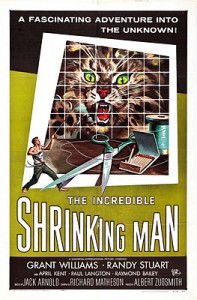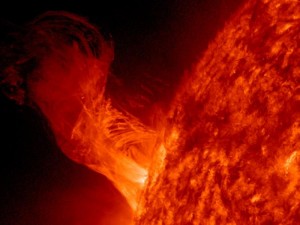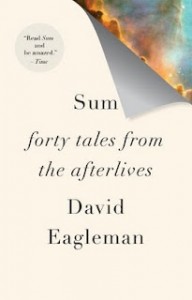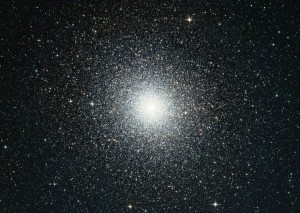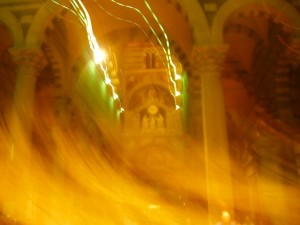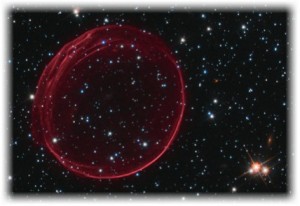The Universe is made of stories
Friday, November 6th, 2020Nearly all of the atoms in your body were once cooked in the nuclear furnace of an ancient supernova. – Frances Collins
The story of us began in the stars. The universe expanded after the Big Bang, forming atoms of hydrogen and helium. The atoms gathered in galaxies where they came in handy as fuel for stars. When stars died (supernova) new atoms were released – including carbon and oxygen, happily for us. By and by, over 8 billion years, planets were formed and Earth’s story began.
Photo (NASA Images): Star that exploded in a supernova leaving a ring that’s rich in oxygen.
A beautiful star-metaphor appeals to my sense that our cosmic journey has meaning:
The universe is made of stars, not atoms – Muriel Rukeyser
The /Xam San people of Southern Africa knew that humans were related to the stars in a mysterious way. The /Xan suffered a slow genocide in the 1800s but their words remain. Their stories tell us that the stars are closely connected to humans:
“The stars know the time at which we die.” –Díä!kwain, 1876
